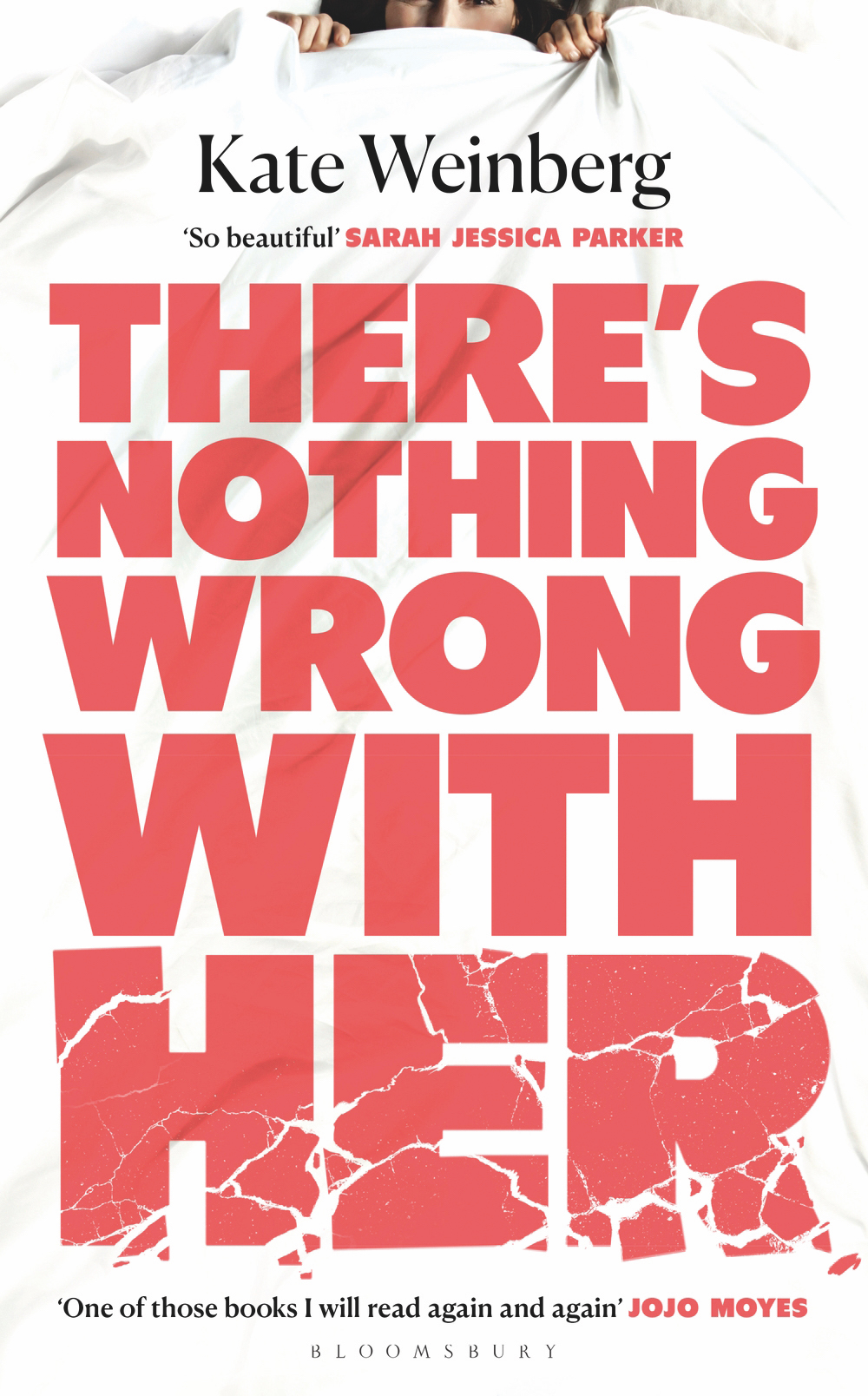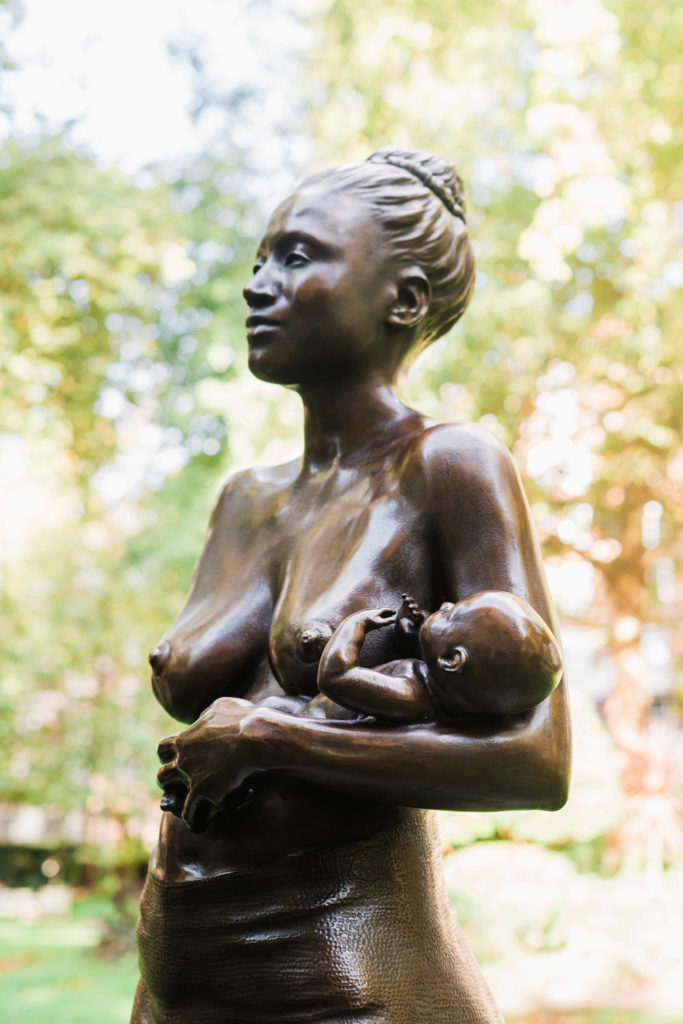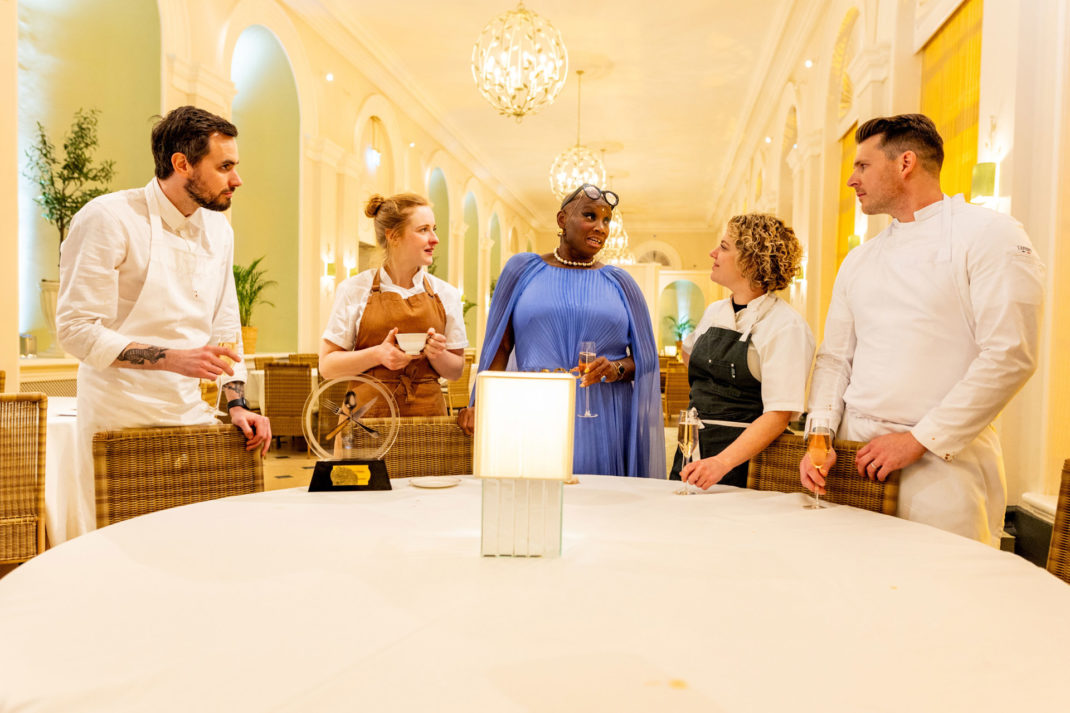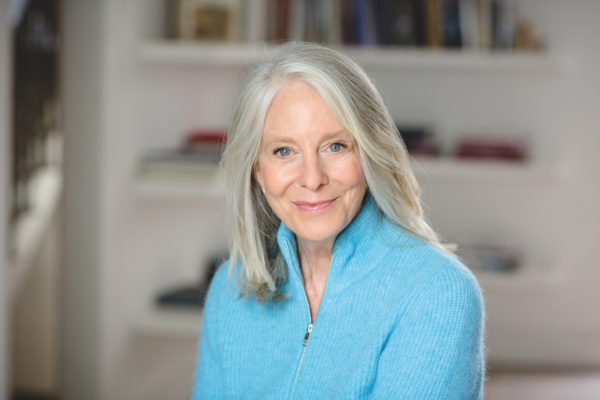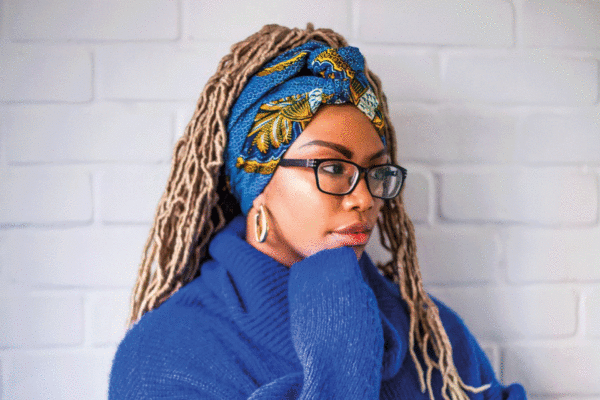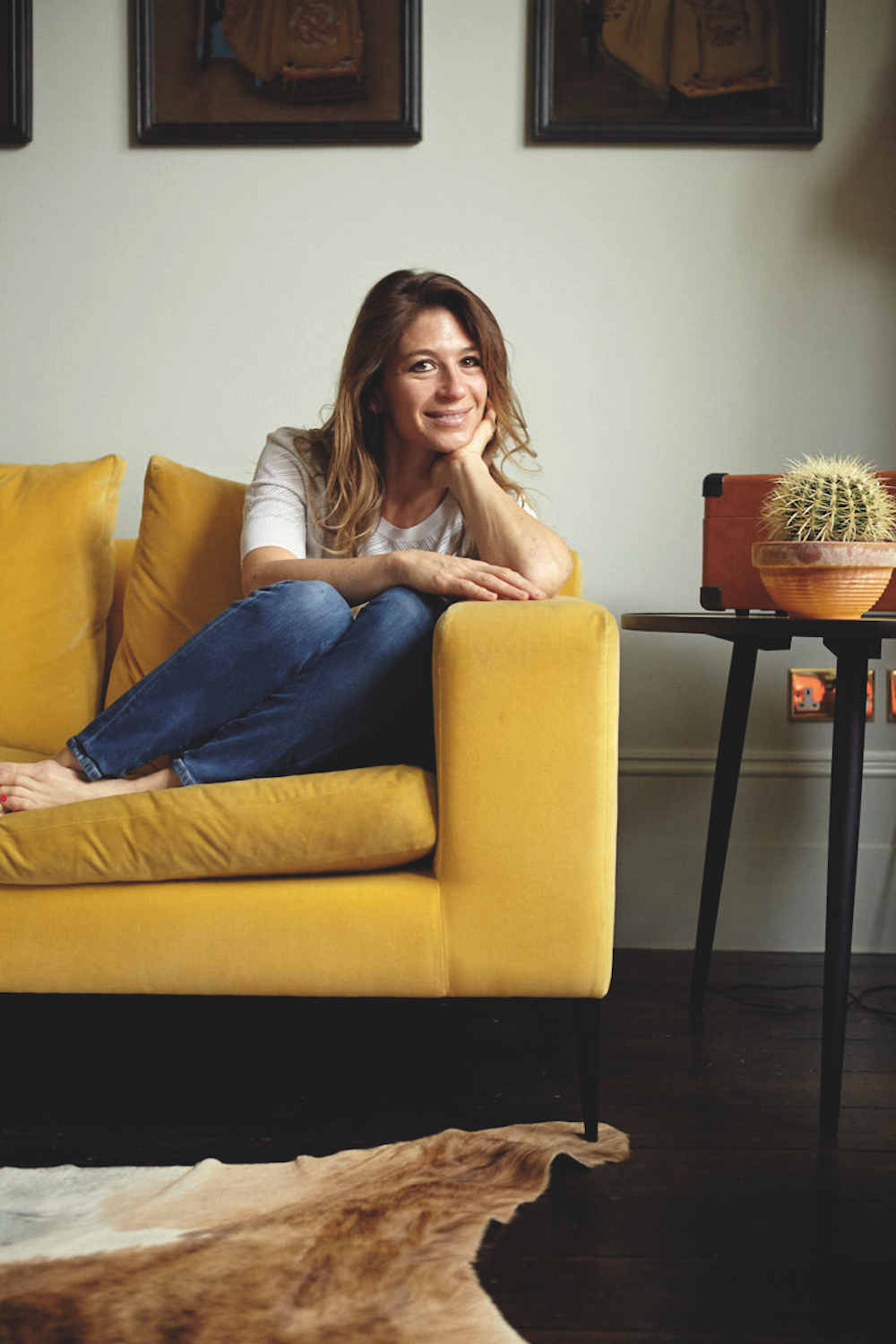
How Ghosts of Ex-Boyfriends and a 16th Century Poet Inspired Author Kate Weinberg
By
1 year ago
Kate Weinberg, author of There‘s Nothing Wrong With Her talks to Belinda Bamber for the C&TH Book Club about illness, honesty and pathfinders.
Author Interview: Kate Weinberg
Belinda Bamber: There’s Nothing Wrong With Her is a novel about Vita, a professional woman whose life-changing illness leads to an unexpected awakening. What inspired this story?
Kate Weinberg: While I was stuck in bed with long Covid, I kept getting visitors. I don’t mean well-meaning friends or relatives: this was lockdown in the pandemic, and we were marooned in a little country cottage in the English countryside. But I mean ghosts from the past: ex-boyfriends, relatives I had lost, a disgruntled character from a book I’d never got round to finishing.
This was the initial spark for Vita’s story, which though a work of fiction is really about finding yourself, in sickness and in love. I learned more about real love, falling in love, failures in love, and false love in the company of these ‘visitors’ while I was stuck at home than I did in all my years out in the world. And strange to say, I wanted to ‘make good’ on lost time. I wanted something meaningful to come out of a period in which I couldn’t really function as a mother, a wife, a friend, or a writer. It wasn’t until I started writing and peeling back the layers of all the crazy things that had been going on in my mind during that period I was stuck in bed, falling in and out of ‘The Pit’, that I realised what a creative space it had been all along, without me knowing it.
Once I was well enough to begin to assemble my characters and come up with a story, the first draft more or less fell out of my head. I felt compelled to find a way to speak about the key touch points of my experience, about how deep and frightening and ultimately liberating illness can be; but also, I hope, to speak for the huge cohort of people living with some of these conditions who are out there all the time, voiceless, frightened and stranded.
BB: It has a strong cast of characters, from a mysterious piano-playing neighbour to a witty Renaissance ghost – the real-life, 16th-century author, Luigi da Porto. Why did you bring him to the story?
KW: Ah, now this has been a long, long love affair. What is ‘me’ in the book is that, about 20 years ago, I lived in Verona and became obsessed with Luigi da Porto, the 16th century poet whose novella is often thought to have been Shakespeare’s inspiration for Romeo and Juliet. For years I’ve been fascinated by him and kept revisiting him. It’s not that he’s the overlooked author of one of the most famous love stories of all time. (Although if I’d written it and Shakespeare had got all the credit, I might have been a little pissed off, too.) Rather, I’m fascinated by the notion that the ideal of romantic love was born by bitterness and betrayal: da Porto wrote it to say how he believed true love should be, not like the love he’d had.
When I say that Vita finds herself in sickness and love, so did Luigi da Porto, and so it’s no wonder, then, why he appears as one of her ghosts. By haunting Vita, he ends up being her path-finder, back through the dark wood that is the reckoning that happens for so many people in the depths of a physical illness, via hard truths that need to be faced, and back into the light.
BB: Most people in Vita’s inner circle are broken in some way, suffering from heartache, grief, or trauma. Why?
KW: My experience is that people who have been through pain and sadness tend to be the ones you turn to when you are lost. They have grown the kind of real-life wisdom you need to learn from to move forward.
BB: Are your plots generally character-led?
KW: Well, actually no. My first novel The Truants sparked initially from the idea of one character, but in the second half of the book, when the murder mystery plotline kicks in, it became as much plot-driven as character-led. I’m always trying to find that sweet spot, where the characters are the most resonant part of the book, and you feel you are living within them as you read it, but that there is enough of a gripping story to mean you never want to put the book down. The challenge in There’s Nothing Wrong With Her was to make a novel set almost entirely in two rooms feel dynamic. I did this by making ghosts of the past, love stories and mysteries from before Vita’s illness burst into the sickroom which I hope makes for as much of a page-turner as a character study.
BB: Vita has secrets and tells lies, including to her husband, Max. Is it possible to form truly honest relationships?
KW: I guess that depends what you mean by ‘truly honest’. Even the most honest people pretend and lie in little ways all the time. Whether out of tact, love or more pragmatic reasons there are certain compromises we make with being truthful every day. Being polite when a stranger is boring, not telling a friend they look terrible in their outfit, inappropriately lunging at someone we find attractive or refraining from throttling that awful relative: all this involves some degree of repression, tongue-biting or self-editing. But I think that’s different from being dishonest, deliberately withholding, cheating or perhaps, worst of all, not being yourself in a relationship. It’s probably healthier and more constructive to think of honesty as a live, imperfect process, rather than an absolute measure by which we can only fail.
BB: The sibling relationship between Vita and Gracie is fraught and deeply touching. Do you write from personal experience?
KW: Absolutely. I am one of three sisters, and since our mother died when I was very young we have been, in ways that move and change all the time, each other’s North stars. But it’s by no means non-fiction. In creating Vita and Gracie’s dynamic, I put different aspects of our characters and histories into a blender with a large dose of invention and then processed it with some of the emotions that I have felt towards them over the years.
BB: Did you name your heroine Vita to reaffirm her capacity for life?
KW: Yes. I wanted her name to feel ironic at first in terms of her sickness and stuckness, but as things progress and we begin to see her unquenchable desire to be alive and healthy in body and mind, I hoped her name would take on a different resonance.
BB: Does Vita feel like your alter ego?
KW: There’s part of me in Vita, part of me in Gracie, even part of me in Mrs Rothwell, the old lady upstairs. For me that’s the best way to create character, sprinkling enough of yourself in them so that you can really imagine what they would do in any situation. But we differ in many ways too, above all perhaps around repression of the past and the desire to lock things away.
BB: In the introduction you write that ‘hope made me into a goldfish’, what do you mean by that?
KW: I’m guessing a lot of people who have chronic conditions may be able to relate to this sentiment. There’s the brain fog which means you find it hard to remember anything, but there was also a feeling, as the illness gaslit my body with its endless cycle of attack and then release of symptoms, a feeling of going round in circles, of wanting to believe it was all over when you felt a reprieve (the famous goldfish seven-second memory!) and then circling back around all over again.
BB: The novel’s title references the way many women’s illnesses have historically been dismissed as neurosis. Has modern science changed attitudes?
KW: Modern science is galloping in this area, and culturally there is progress in accepting the entanglement of the body and the mind when it comes to health and illness, but we’ve got a long way to go. Statistically, when it comes to women’s health and misdiagnosis and those old narratives around hysteria and neurosis it’s still pretty bleak.
My truth was that the relationship between body and mind was a very nuanced one: I began to understand that my brain could affect my symptoms, but my symptoms were by no means ‘all in my head’ so I did my best to tread a very careful line, as in some ways this was the book’s most important message.
BB: Which ghostly bedside ‘visitor’ were you happiest to see during your own confinement in bed?
KW: One of the things that’s emerged through writing the novel has been a deeper sense of connection with my mother. I was only three when she died of a brain tumour, so I have virtually no memory of her. But recently I’ve begun to think about how for months she went to doctors, complaining of a headache, but kept being sent home with painkillers. So she must have experienced something similar to me: that fear that something was really wrong, coupled with a sense of being doubted, and how that would have eroded her own self-belief, too. I found myself feeling closer to her and what she must have gone through as a young woman, only a few years older than Vita, right before she died.
BB: Vita is the producer of a podcast called Confessions that invites celebrities to talk about shame and guilt arising from trauma, and IRL you also host a podcast called Shelf Help. In There’s Nothing Wrong With Her, you show what happens when children aren’t believed and self-doubt creeps in, so they no longer trust who they are or what they’ve experienced. I’m intrigued to know what it feels like when you turn a personal story into a novelistic narrative. Are we the product of our stories? And to what extent do you now feel defined by your books?
KW: I don’t feel defined by my books, but I am the kind of writer that feels all the best material comes from digging very deep, or as another author once said to me, ‘putting the pen in the vein’. I think something very interesting is happening around the idea of ‘trauma’ at the moment. On the one hand young people are being encouraged to be much less repressed and to get to grips with pain and suffering that may have otherwise tarnished their relationships and quality of life. On the other hand, I think there is a trend to jump too quickly on traumatic events as the answer to all that an individual may struggle with, and that, I think, has consequences too.
BB: There’s a mental health crisis in the UK now, especially among children. What single measure would you introduce to help alleviate this?
KW: Wonderful question! Rather than a military national service, wouldn’t it be great if for a few weeks graduates had to go back into schools and talk to younger kids about mental health? Young people are much more open to learning from those a little older than themselves, rather than from teachers of a different generation. I think it would also encourage the older students to enter a process of self-reflection at a time when they may be otherwise escaping it.
BB: How did you become a writer and what’s your advice to a young person dreaming of becoming a novelist when AI is threatening to take over?
KW: Mine was a long, bumpy road. My advice would be: read a ton, and write about the stuff you usually want to hide. I think that in an age of AI, the role of the genuinely creative and original writer is more important than ever. But that means writers need to push even harder at finding those nooks and crannies of character and human experience that machine learning won’t be able to replicate. If your dream is to make a killing from formulaic romances or thrillers, I’m less optimistic.
BB: Who was your mentor?
Luckily for me, the late Lorna Sage, author and literary critic, was my mentor when I was doing my Masters in Creative Writing. She inspired the lighter shades of one of the main characters in my first novel, and her memoir Bad Blood is the best I’ve ever read.
BB: What would be your dream venue for a writer’s residency?
A dream writing residency? What a wonderful thing to ponder on… I can imagine all sorts of beautiful, exotic places I’d love to write, but in the end, I’d love to be in the presence of another mentor I could learn from. So, top of the list: The University of Syracuse, being regularly inspired and edited by the American writer and professor, George Saunders.
BB: What’s your favourite place for writing, and do you have a strict routine?
KW: I don’t have a strict routine, and always wish I did. I write best in the morning and late at night, and all the mini deadlines in my day are created by children, their school days and activities. I’ve tried different office spaces, including a writing shed in the garden, but I’m coming to terms with the fact that I find writing in complete isolation difficult, and having other bodies in the room, for example in a co-working space, is both grounding and prevents me from procrastinating.
BB: Which books do you reach for when you need centring, in life or work?
KW: I always return to Moon Tiger by Penelope Lively, Le Grandes Meaulnes by Alain-Fournier, For Esmé with Love and Squalor by JD Salinger and – more recent, but very inspiring on the writing front – A Swim In the Pond in the Rain by George Saunders.
BB: Which books are you rushing to give friends right now?
KW: Faber have just reprinted Ex-Wife by Ursula Parrott, a forgotten classic from the 1920s. It’s an incredibly funny, dark and challenging read for a modern feminist, so I’ll be doling that one out to all my friends. Miranda July’s All Fours is strong meat and not for everyone, but I think it’s a groundbreaking book and should be read close to a fire extinguisher.
BB: Which childhood favourites do you recommend to young people?
My favourite YA recommendations are I Capture the Castle by Dodie Smith and The Lost Art of Keeping Secrets by Eva Rice, both of which should be given to any young, aspiring novelists!
BB: Can you share details of your next book?
KW: I won’t too much because it’s early on in the process, but at the moment a lot of it will take place in a train station.
BB: This is our Creativity issue – what’s giving you inspiration this autumn?
KW: The beauty and melancholy of the trees turning – all those coppers, golds and reds – always inspires me in autumn, as does the light. I think I’m never more aware of time passing that I am in autumn, and that can be galvanising. So you’ll probably find me wandering around in forests, looking up at the canopies and dreaming about my new characters.
There’s Nothing Wrong With Her by Kate Weinberg is out now

